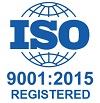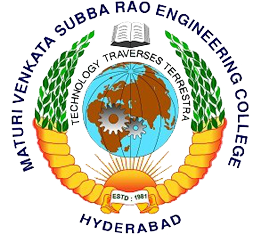WITH EFFECT FROM THE ACADEMIC YEAR 2012 - 2013
ME 304
HYDRAULIC MACHINERY AND SYSTEMS
Instruction 4 Periods per week
Duration of University Examination 3 Hours
University Examination 75 Marks
Sessional 25 Marks
UNIT-I
Hydraulic Machines: Classification– Impulse momentum equation– Layout of hydraulic power plant – Working principle - Impact of jet on vanes – Force exerted by a jet striking (i) a fixed flat vertical vane held normal to the jet flow (ii) At the centre of a fixed symmetrical curved vane (iii) At one end of fixed symmetrical and unsymmetrical curved vanes (iv) Flat vertical vane moving in the direction of jet (v) A series of flat vertical moving vanes (vi) At the centre of a symmetrical moving curved vane (vii) A symmetrical curved vane moving in the same direction as that of jet at inlet (viii) At one end of an un-symmetrical moving curved vane (ix) Hinged plate
UNIT-II
Reciprocating Pumps: Classification, working principle-single and double acting pumps-discharge, work done and power required to drive the pumps-slip, % slip and negative slip- variation of pressure head in the
suction and delivery pipes due to acceleration of piston- variation of pressure head due to friction in the suction and delivery pipes -Indicator diagrams- Ideal and actual diagrams – Effect of piston acceleration and pipe friction on indicator diagram- Maximum speed at which the pump must run to avoid separation during suction and delivery strokes-Air vessels-Function of air vessels- Work saved by fitting air vessels to single and double acting pumps – Discharge of liquid into and out of air vessels-Performance characteristic curves.
Other types of pumps: Working principles and characteristics of gear pump and jet pump.
UNIT-III
Centrifugal pumps: Classification – Working principle – Comparison over reciprocating pumps – Velocity triangles – Manometric head – Work done per second – Head equivalent of work done – Manometric, mechanical and overall efficiencies – Pressure rise in the impeller – Minimum starting speed – Specific speed – Physical significance of specific speed – Model testing – Conditions of similarity of CF pumps – Priming – Performance characteristic curves – Troubles (operational difficulties), reasons and remedies in CF pumps – Cavitation – Effects of Cavitation – Precautions against Cavitation, working principle and characteristics of a self priming pump.
UNIT-IV
Hydraulic Turbines: Classification of impulse and reaction turbines – Construction and working of Pelton wheels, Francis turbine and Kaplan turbine – Velocity triangles – Work done (power developed) – Hydraulic, Mechanical and Overall efficiencies – Maximum efficiency – Comparison between Impulse and reaction turbines – Comparison between Francis and Kaplan turbines – Specific speed – Physical significance of specific speed – Unit quantities – Model testing of turbines – Conditions for similarity of turbines – Draft tubes – functions and types of draft tubes – Surge tanks – Functions and types of surge tanks – Performance characteristic curves.
UNIT-V
Industrial Hydraulics: Basic components of hydraulic circuits; Properties and types of hydraulic oils; Working principles of external Pumps - gear, lobe, vane, radial piston and axial piston; Construction details and actuating
7 8
methods of sliding spool directional control valves. Specification of D.C. valve; Working of - flow control, pressure relief, pressure reducing and sequencing valves; Working and construction details of single acting and double acting actuator and hydraulic motor; Symbolic representation of various components; Circuit for control of single & double acting actuators; Regenerative circuit; Speed control methods of actuators: meter-in, meter-out, and bleed off; Working of various servo systems-hydro mechanical, hydraulic – hydraulic, electro hydraulic; Construction details of oil reservoir and selection criteria for pumps and actuators.
Suggested Reading:
- 1.Bansal, R.K., “A text book of Fluid Mechanics and Hydraulic Machines”, Laxmi Publication (P) Ltd., New Delhi, 2004
- 2.Modi, P.N., and Seth, S.M., "Hydraulic and Fluid Machines",
Standard Book House, New Delhi, 2004
- 3.Ramamrutham, S., “Hydraulics, Fluid Mechanics and Fluid machines”, Dhanpat Rai & Sons, New Delhi, 2004
- 4.Kumar, K.L., “Engineering Fluid Mechanics”, Eurasia Publishing House (P) Ltd., New Delhi, 2004
- 5.Kumar, D.S, “Fluid Mechanics and Fluid Power Engineering”,
S.K. Kataria & Sons, 2008
- 6.Majumdar, S.R., “Oil Hydraulic Systems – Principles and Maintenance”, Tata McGrawHill, 2004, New Delhi.



